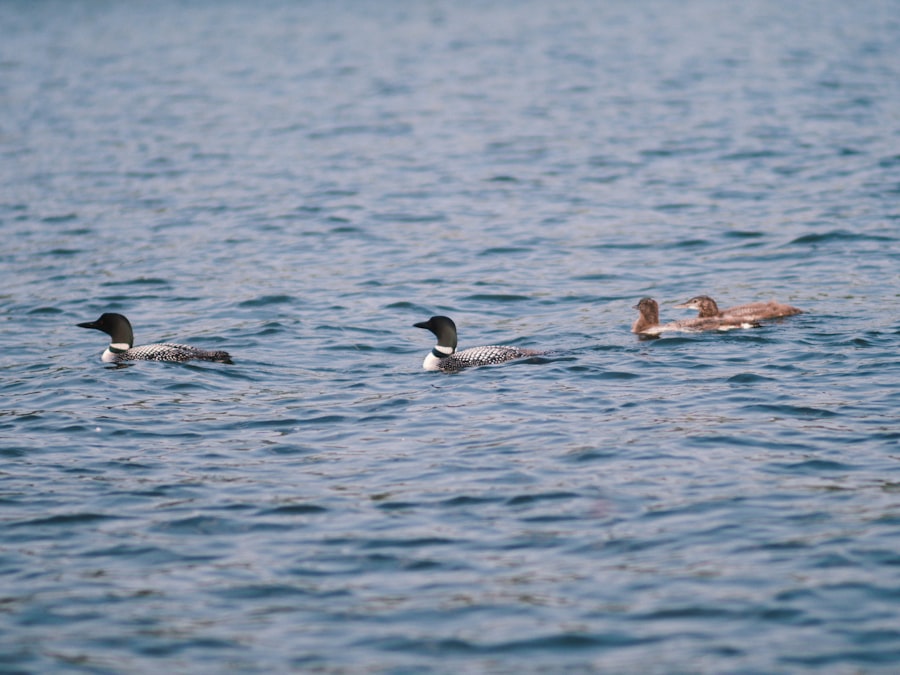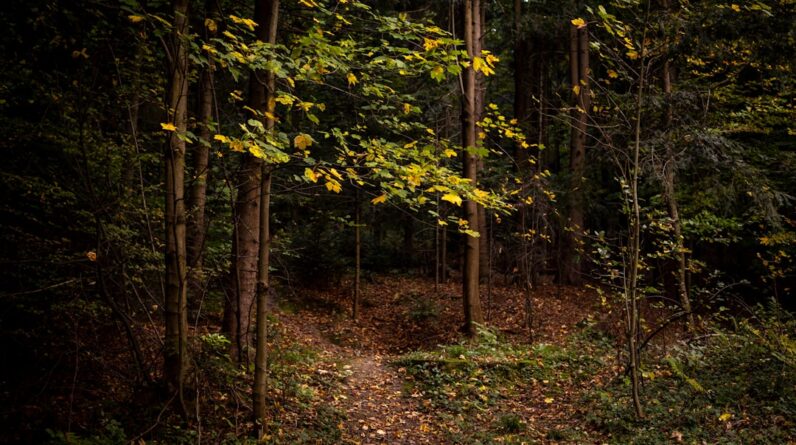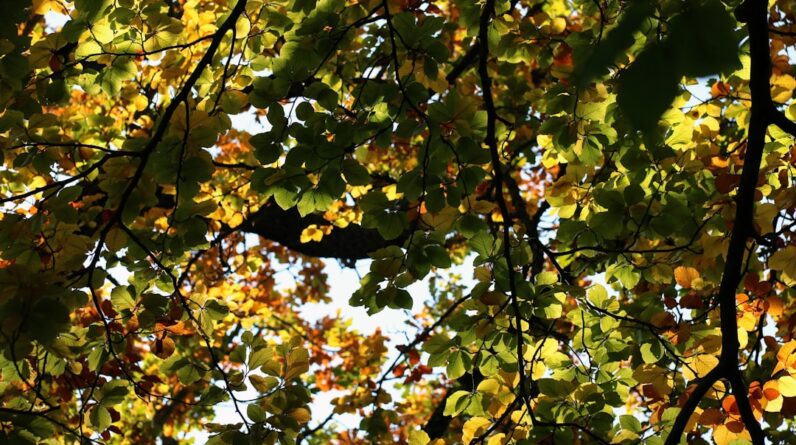Loons are fascinating and unique birds that can be found in various parts of the world, including Northern Ontario. They are known for their distinctive appearance, with their sleek bodies, long necks, and striking black and white plumage. However, what truly sets loons apart is their haunting call that echoes across the water.
The call of a loon is a sound that is instantly recognizable and often associated with the tranquility of cottage country. It is a haunting and beautiful sound that can be heard from miles away. The call of a loon is often described as a wailing or yodeling sound, and it is used by the birds to communicate with each other and establish their territory.
Key Takeaways
- Loons are known for their distinctive call, which can be heard from far distances.
- Northern Ontario is a natural habitat for loons, where they can be observed in their natural environment.
- Loons hold significant cultural importance in Indigenous communities.
- The best times to observe and hear loons in cottage country are during the early morning and late evening.
- Loons are known for their unique behaviours and characteristics, such as their ability to dive deep underwater.
The Natural Habitat of Loons in Northern Ontario
Northern Ontario is home to a vast network of lakes and waterways, making it an ideal habitat for loons. These birds can be found in both freshwater and saltwater environments, but they are most commonly found in lakes and rivers. Loons prefer clear, deep lakes with plenty of fish for them to feed on.
In Northern Ontario, loons can be found in a variety of different habitats, including boreal forests, wetlands, and rocky shorelines. They are often seen nesting on small islands or along the edges of lakes. These areas provide the loons with protection from predators and easy access to their food source.
The Significance of Loons in Indigenous Culture
Loons hold great significance in Indigenous culture and spirituality. They are often seen as messengers between the spirit world and the physical world. In many Indigenous traditions, loons are believed to have the ability to bring messages from ancestors or spirits.
The symbolism and meaning behind loons in Indigenous traditions vary among different communities. However, they are often associated with qualities such as wisdom, protection, and guidance. Loons are also seen as symbols of peace and tranquility, and their presence is believed to bring a sense of calm and harmony.
The Best Times to Observe and Hear Loons in Cottage Country
If you want to observe and hear loons in their natural habitat, there are certain times of the year and times of day that are best for this. In Northern Ontario, the best time to see loons is during the summer months, from May to September. This is when they are most active and visible.
Loons are most active during the early morning and late evening hours, so these are the best times to listen for their distinctive call. They are also more likely to be seen during calm, quiet days when the water is still. It is important to be patient and quiet when observing loons, as they can be easily startled and may dive underwater if they feel threatened.
The Behaviour and Characteristics of Loons
Loons are fascinating birds with a range of unique characteristics and behaviors. They are excellent swimmers and divers, with their streamlined bodies and webbed feet allowing them to move effortlessly through the water. Loons can dive to depths of up to 200 feet in search of fish, their primary food source.
During the breeding season, loons form monogamous pairs that stay together for life. They build nests on the ground near the water’s edge or on small islands. The female lays one or two eggs, which both parents take turns incubating. After hatching, the parents care for the chicks until they are old enough to fend for themselves.
The Threats Facing Loons in the Wild

Unfortunately, loons face a number of threats in the wild that have led to declines in their populations. Habitat loss is one of the biggest threats facing loons, as development and human activity have resulted in the destruction of their nesting sites and feeding grounds.
Pollution is another major threat to loons. Chemical pollutants, such as mercury and pesticides, can accumulate in the bodies of loons and have detrimental effects on their health and reproductive success. Climate change is also a concern, as it can alter the availability of suitable habitat and disrupt the timing of key events in the loon’s life cycle.
The Importance of Conservation Efforts to Protect Loons
Given the threats facing loons, conservation efforts are crucial to protect these birds and their habitat. Conservation organizations in Northern Ontario are working to raise awareness about the importance of loons and implement measures to protect them.
These efforts include habitat restoration projects, monitoring and research programs, and public education initiatives. By working together, we can ensure that future generations will be able to enjoy the beauty and tranquility of loons in cottage country.
The Role of Loons in Maintaining the Ecosystem
Loons play a vital role in maintaining the health of the ecosystem in which they live. They are top predators in their food chain and help to control fish populations by feeding on smaller fish species. This helps to maintain a balance in the ecosystem and prevent overpopulation of certain fish species.
In addition, loons contribute to water quality by consuming large quantities of small fish, which helps to reduce nutrient levels in lakes. Their droppings also provide nutrients that support the growth of aquatic plants and algae, which are important for other species in the ecosystem.
The Connection Between Loons and Summer Nights in Cottage Country
Loons have become synonymous with summer nights in cottage country. Their haunting calls echo across the water, creating a peaceful and relaxing atmosphere. The sight of a loon gliding across a calm lake at sunset is a quintessential image of cottage life.
The presence of loons adds to the overall experience of being in nature and provides a sense of connection with the natural world. Their calls can be heard from miles away, and they serve as a reminder of the beauty and tranquility that can be found in the wilderness.
Tips for Enjoying and Respecting Loons During Your Cottage Vacation
While it is a joy to observe and listen to loons during your cottage vacation, it is important to do so in a way that minimizes your impact on these birds and their habitat. Here are some tips for enjoying and respecting loons:
1. Keep your distance: It is important to keep a safe distance from loons to avoid disturbing them. Use binoculars or a camera with a zoom lens to get a closer look without getting too close.
2. Avoid loud noises: Loud noises can startle loons and cause them to dive underwater. Keep noise levels to a minimum and avoid sudden movements.
3. Do not feed loons: Feeding loons can disrupt their natural feeding behaviors and lead to dependency on humans for food. It is best to let them find their own food in their natural habitat.
4. Dispose of trash properly: Properly dispose of any trash or litter to prevent pollution of the water and surrounding environment.
5. Support conservation efforts: Consider supporting local conservation organizations that work to protect loons and their habitat through donations or volunteer work.
By following these tips, you can enjoy the presence of loons while ensuring that they are able to thrive in their natural habitat for years to come.
If you’re looking to unwind and connect with nature, “The Call of Loons: Summer Nights in Northern Ontario’s Cottage Country” is a must-read article. It beautifully captures the serene atmosphere of Northern Ontario’s cottage country and the enchanting sound of loons echoing across the lakes. For more tips on maintaining a healthy lifestyle, check out this related article on the key to weight loss.








